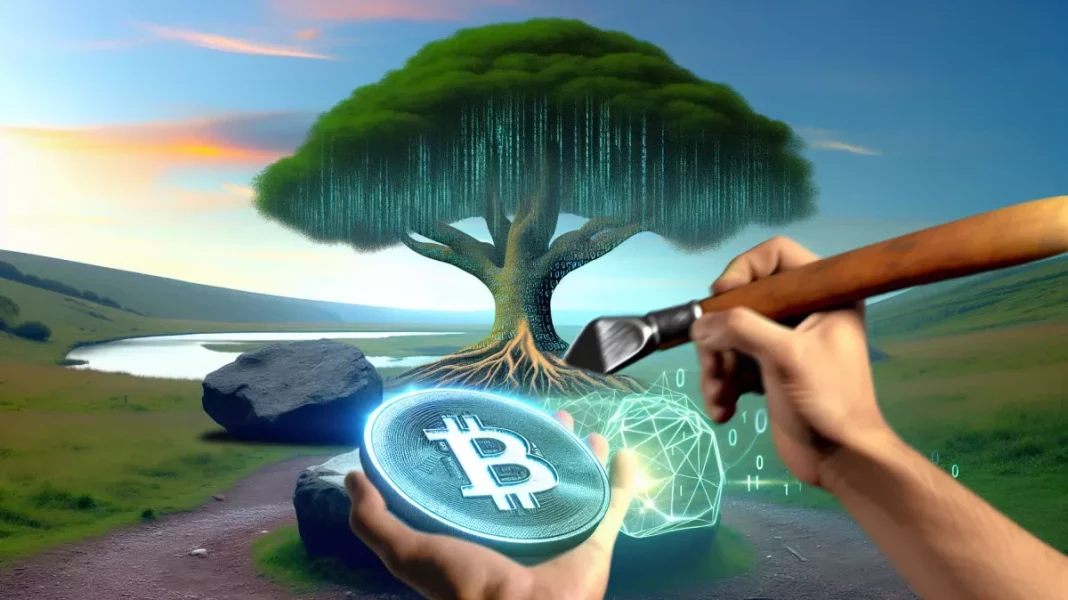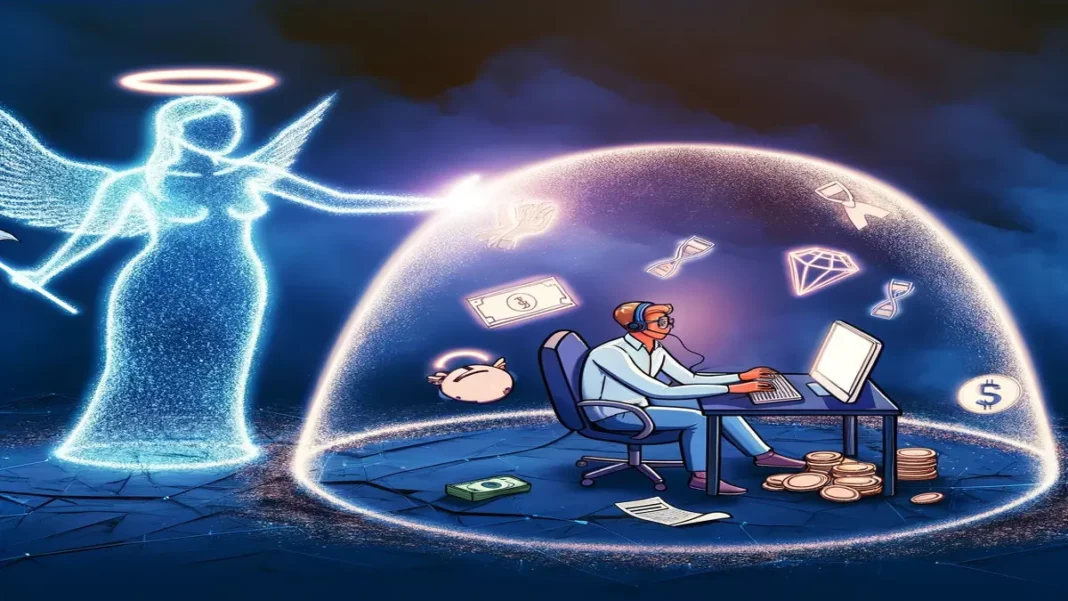In the ever-evolving world of digital finance and artistic expression, a fascinating trend has risen to prominence, drawing the keen eyes of both art enthusiasts and Bitcoin aficionados alike – the harmonious intersection of Bitcoin and art. In this spotlight, we delve into the unconventional fusion where cryptography meets creativity, and we explore how this convergence is reshaping our understanding of value, ownership, and the very essence of art itself.
The art world is no stranger to change and innovation. From the Renaissance to the Impressionist movement, each era has brought forth novel perspectives and mediums. Today, the medium capturing everyone’s imagination is the blockchain, and at its heart lies Bitcoin – not merely a digital currency but a platform for a new kind of art.
At the core of this unique intersection is the concept of “crypto art.” Crypto art is digital artwork associated with a unique token on the blockchain, most commonly as a non-fungible token (NFT). Each piece of crypto art is one-of-a-kind, or part of a limited run, and cannot be duplicated, thanks to the cryptographic foundation of blockchain technology.
The implications for artists have been groundbreaking. Through the tokenization of their artwork, creators now have unparalleled control over the scarcity and distribution of their pieces. Bitcoin, with its decentralized nature, allows artists to sell their works directly to collectors without intermediaries. This direct-to-collector approach has disrupted the traditional art market, granting artists greater autonomy and a larger share of the profits.
But how does this relate specifically to Bitcoin? While Ethereum and other blockchains have become popular for minting NFTs, Bitcoin offers its own set of unique solutions to the art world. Platforms built on top of Bitcoin, such as the Lightning Network, have begun to enable microtransactions, facilitating a new kind of interaction between artists and patrons. Through these Lightning-powered platforms, artists can monetize their work in innovative ways, from digital collectibles to interactive art experiences that evolve with each Bitcoin transaction.
Furthermore, Bitcoin’s philosophical underpinnings resonate deeply with certain artists. Many crypto artists draw inspiration from the ideas of decentralization, privacy, and resistance to censorship. Their work often critiques traditional financial systems, societal structures, and the power dynamics within the art world.
One exemplary tale lies in the story of a visionary artist, known pseudonymously as Satoshi, who blurs the lines between artistic expression and monetary value. Satoshi’s magnum opus is a series of digital frescoes that depict the tumultuous journey of Bitcoin from an obscure white paper to a global phenomenon. Each fresco is encoded with a fraction of a Bitcoin, hidden within its digital brushstrokes. Collectors who acquire a piece of this series not only own a unique work of art; they also hold a piece of Bitcoin history, an asset that can be traded or appreciated in value over time.
As we journey through this immersive blend of Bitcoin and art, another revolutionary facet of this story is Bitcoin’s ability to immortalize art through permanence on its blockchain. ‘Forever Art’ projects are inscribing small pieces of art directly onto the Bitcoin blockchain, ensuring that as long as the blockchain exists, so too will the art. This bestows a sort of digital eternity to artwork, protecting it from loss, destruction, or censorship.
Moreover, it’s not only visual art being transformed by Bitcoin. Literary art, music, and performance art are also finding new ways to incorporate Bitcoin’s technology. ‘Crypto-poetry’ often graces blockchain transactions, while musicians can encode their songs into actual Bitcoin transactions, making every playback a part of the blockchain symphony.
The fusion of Bitcoin and art has not been without controversy. The staggering energy consumption of early blockchain technology has drawn criticism from environmental activists. In response, artists and developers are exploring more sustainable practices, including the usage of renewable energy and the creation of more energy-efficient blockchain protocols.
The intersection of Bitcoin and art is not merely a collision of two worlds; it has become a new frontier that artists are swiftly populating with their creations. It has given rise to a renaissance in digital art, enabling artists to explore themes of value, permanence, and the role of currency in society. The result is an eclectic mix of artworks that range from the whimsical to the profound, each pushing the boundaries of what art can be in the age of cryptocurrency.
As the value of Bitcoin continues to ebb and flow, so too does the art that it inspires. Whether seen as a novel gimmick or the next major art movement, the fusion of Bitcoin and art continues to provoke conversation, spur innovation, and redefine what it means to be an artist or collector in the digital age.
In the grand scheme, whether the art world comprehends or dismisses this new genre, it undeniably contributes to the discussions of what constitutes art and value. The intersection of Bitcoin and art is a testament to human creativity and our relentless desire to blend technology and expression in ways that captivate, challenge, and inspire. As we witness this interplay between decentralized currency and artistic creation, it is clear that we are standing at the precipice of an era where art is not only seen or felt but also intertwined with the very essence of the digital economy.



